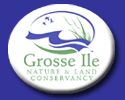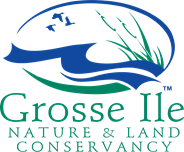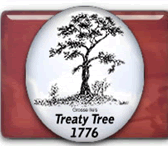

The Grosse Ile Nature and Land Conservancy (GILNC) and the Grosse Ile Historical Society (GIHS) are working together to bring back the Heritage Tree Program that was started by the Society 50 years ago. The Heritage Tree Program is about identifying and protecting heritage trees in our community. Heritage trees are defined as trees which were planted as a memorial to someone, endangered species, historic trees, and the largest trees of their species on the island. Heritage trees nominations will be reviewed by the GINLC and GIHS and submitted to the Grosse Ile Township board for registration. Registered heritage trees will then be protected from being cut down unless there is a compelling reason (disease, decay, potential hazard, etc).
We need your help - GINLC and GIHS are requesting help from the citizens of Grosse Ile in identifying these Heritage trees. We would like our citizens to determine the age and the size of their trees and report it back to us. While you are at it, take a picture of you and your family with your favorite Grosse Ile trees and submit them to the GINLC and we will publish selected submitted pictures in our seasonal newsletter and on our web site.
Click here for an entry form that can be filled out, printed and sent to the GINLC.
Click here to fill out an on-line entry form if you are using Firefox, Chrome, Apple, Windows Live Mail.
Click here to fill out an on-line entry form if you are using Outlook.
Determining Tree Size - Diameter at breast height, or DBH, is the standard for measuring trees. DBH refers to the tree diameter measured at 4½ feet above the ground. If the tree has a branch or a bump at 4½ feet, it is better to measure the diameter slightly below or above the branch/bump.
- With a measuring tape, measure 4½ feet up the trunk of the tree from the ground. Use a thumb tack to mark the height on the tree.
- Wrap your string around the tree trunk at 4½ feet. Make sure the string is straight and tight around the trunk, and mark or cut the circumference on the string.
- Measure the length of string to get the circumference of the tree.
- Convert the circumference measurement to diameter by dividing the circumference by pi (3.14).
Determining Tree Age - Multiply the diameter of your tree (that you determined above) by the growth factor of your particular species of tree in the chart below. This will tell you the approximate age of your tree. (For instance, if you have a white oak with a diameter of 22 inches, you would multiply that by the growth factor of 5 to determine your tree is approximately 110 years old.) A calculator is provided below.
Growth Factors by Tree Species
Age in years = Growth Factor X diameter in inches (larger growth factor = slower growth)
Species
Growth Factor
Species
Growth Factor
Aspen
2.0
Ironwood
7.0
Basswood
3.0
Red Maple
4.5
River Birch
3.5
Silver Maple
3.0
White Birch
5.0
Sugar Maple
5.0
Black Cherry
5.0
Pin Oak
3.0
Cottonwood
2.0
Red Oak
4.0
Dogwood
7.0
White Oak
5.0
American Elm
4.0
Redbud
7.0
Shagbark Hickory
7.5
Black Walnut
4.5
http://forestry.about.com/od/silviculture/a/Estimating-A-Trees-Age.htm

